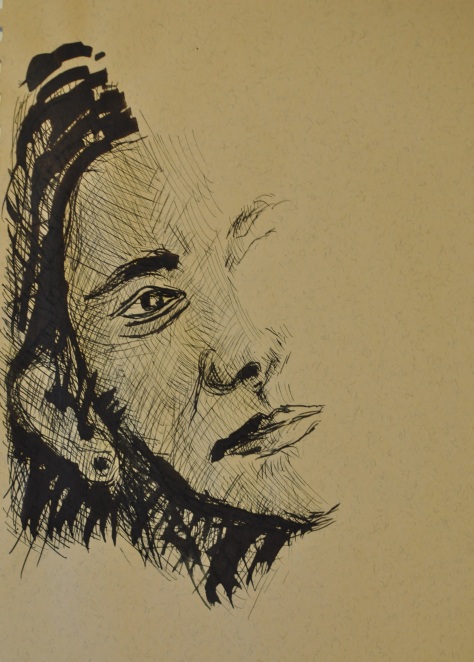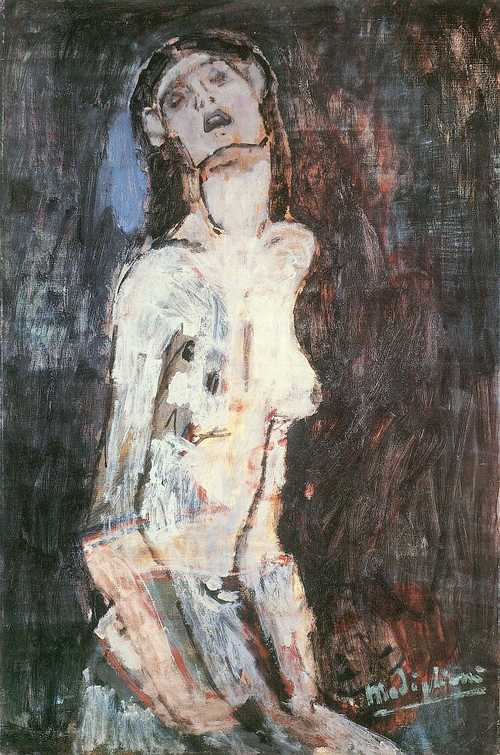Project 1: Fabric and Form
Exercise 1 Drawing fabric using line and tone and Exercise 2 Emphasising form with cloth
In this exercise I tried to analyse a fragment of fabric on the side of the armchair, I used tone and line and for some both together to show this. Some of the sketches represent a fragment of fabric as I focused on one part of this fabric and tried to analyse how all the folds and creases look and how you can achieve that affect using different techniques, I tried to show the structure of the fabric. I came to the conclusion that on a small piece of fabric to showing structure using charcoal looked more stable than doing a line drawing using pencil or felt tip which allowed me to give the fabric more dynamics, these observations were used in the next exercise where some drawings are more stable and focus more on light and atmosphere and some using sharp lines help build the figure of the model in a more dynamic way. The model in the loose fabric was hard to draw as the figure of the model was distorted by the fabric, this made the whole exercise harder. I knew about this and so I concentrated on the fact that my model was wearing loose clothing and in a quick way define the loose fabric














Project 2 Proportion
Exercise 1 Quick studies and Exercise 2 Longer studies
This exercise was a continuation of work from the previous exercise. In this exercise I sat my model down and I did quick sketches changing my position. I used felt pen. From the first drawing I noticed that because the seat was soft the bottom of my model was hidden, this distorted the shape slightly. I tried to do the sketches quickly and so they appeared lively, I did not pay much attention to detail. For the longer study I did a drawing on a larger format of the same model with the only difference being the model was now sitting on the sofa. I also joined a live model class and started working with a nude model. So I did a few quick sketches and longer studies at this class.










Project 3 Form
For these exercises I did work at home as well as using the opportunity at a live drawing class where I could take lots of observations of the human form and define the proportions and shape as well as observing the human figure from different angles where complications are formed as some elements are in a space that makes it difficult to portray them on paper.
In my sketch book I did a many drawing where I arranged my model in different positions and tried to build proportions in a quick way. In all theses I tried to focus on basic shapes, essential elements and stance of the human body. I came to the conclusion that the difficulty in showing the model on paper depends on my angle, position and distance from the model. It is much easier to show the model from further away which makes it easier to figure out proportions of the model with respect to itself, it is much harder to draw a model close up where I am closer or above the model and the proportions then change and I had to think harder about perspective and how the human body is placed in the space, some of my sketches I did not think about all this and just tried to create something without thinking and then looking back at some of them especially the nudes of a woman they took on a more intimate character but after deeper analysis I came to the conclusions that it is very important to look at the proportions and construction of the model.


























Exercise 4 Energy
For this exercise I didn’t have many ideas of how to show energy so I looked at photographs of ballet dancers and show them in a quick and easy way, the poses themselves would be hard to do for my model so I just used the pictures. I will write about this more with the moving figures.
Project 4 Structure
Exercise 1 Structure of the Human Body
For this exercise I did a few sketches for example of my hands or asking my model to lie down and focused on for example the knees or bottom taking just parts of my models and drawing that fragment.


Exercise 2 Three Figure Drawing
I at first did quick sketches with the model in a sitting position, lying on the sofa and stood up. The seated and lying down studies I will show in my final project as I used these sketches for my final piece.









Project 5 Moving Figures
Moving figures were a natural continuation of the Energy exercise; I did a few sketches of groups of figures as well as single figures. I tried to draw really quickly and not focus too much on all the detail in the photograph; I tried to show energy and movement in my sketches. I didn’t focus too much on proportion, for example in the picture of a ballerina doing the splits I multiplied my lines and I repeated the body shape multiple times to show the effect of movement and energy of the figure. My first picture showing a pair of dancers looked too stable and you couldn’t really see movement in it and so I added vertical lines to try to show some movement around the pair, especially in this picture you can see that the legs of the dancers are in a position that isn’t moving so it doesn’t really show energy in itself.






Project 6 The face
Before I started the exercises I picked different pictures of random faces and drew different parts of the face for example the nose or lips. I did this without thinking about what the photo looked like just picking at random. After this I picked faces and drew the whole face, all faces have different character and shape; I tried to define the features of the face quickly. Next I started drawing self-portraits, I did this using different techniques. I tried to portray my face, know to me, in a way that showed the face differently in each picture but also made the picture more interesting. Next I did two portraits from memory, the first was a picture of an old bearded man who I used to see this was done in felt pen, and the second was a drawing of a woman using pastels. In the portrait of the woman I tried to show the face in enface and profile at the same time and this is why the nose, which is the first thing you notice, is showed from the profile, the woman isn’t looking straight and the forehead shows that the woman is slightly tilted but when you look at the face as a whole it is central. There is some influence of Modigliani in the picture, I had his work in mind while doing this picture from memory but I wanted to avoid the similarities so I drew a fuller face.







































































































